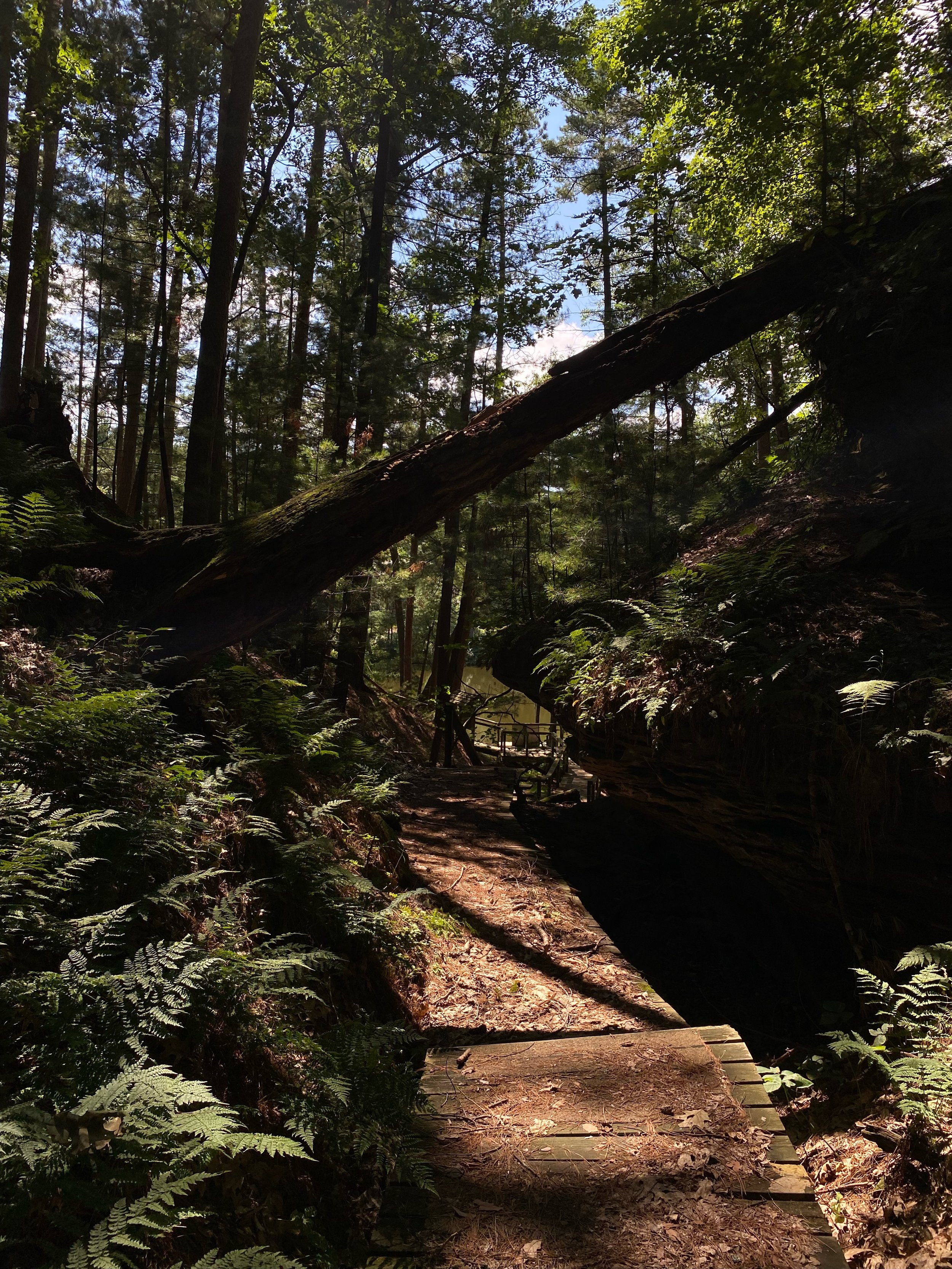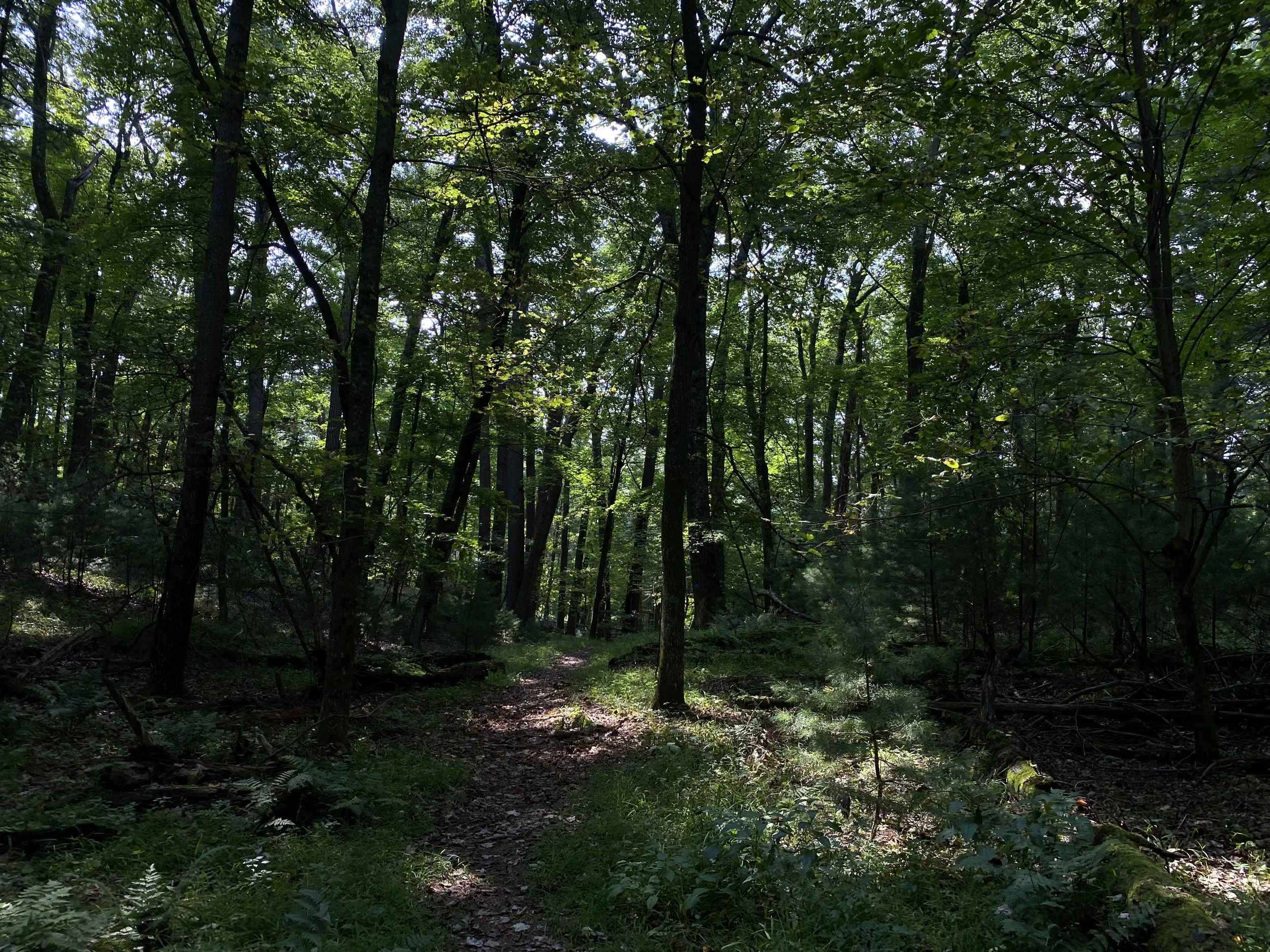
Tracking the fate of carbon and nutrient cycling within soils under differing tree species
Study Site: Blackhawk Island (43.648905, -89.801581)
Blackhawk Island houses all the dominant tree species and soil types found across Wisconsin. The site offers climate controls, which can significantly impact carbon and nutrient cycling.
I chose two tree species–one arbuscular mycorrhizal and one ectomycorrhizal–to study the effects on microbial necromass incorporation, sugar maple (Acer saccharum. Marshall) and red oak (Quercus borealis Michx.), respectively.
Microbial Carbon Use Efficiency (CUE)
My research currently focuses on tracking the fate of isotopically labeled compounds within soils of different microbial and chemical composition. Using enriched glucose and aspartic acid, I am able to measure the CUE of soil microbial communities under sugar maple and red oak to understand tree species influence on carbon cycling.
Viral Stimulation
There is limited understanding of viral impact on microbial community turnover within soil. The viral stimulant Mitomycin C (MitC) offers insight into how microbial communities are impacted by viruses, and how they contribute to the carbon cycle.

